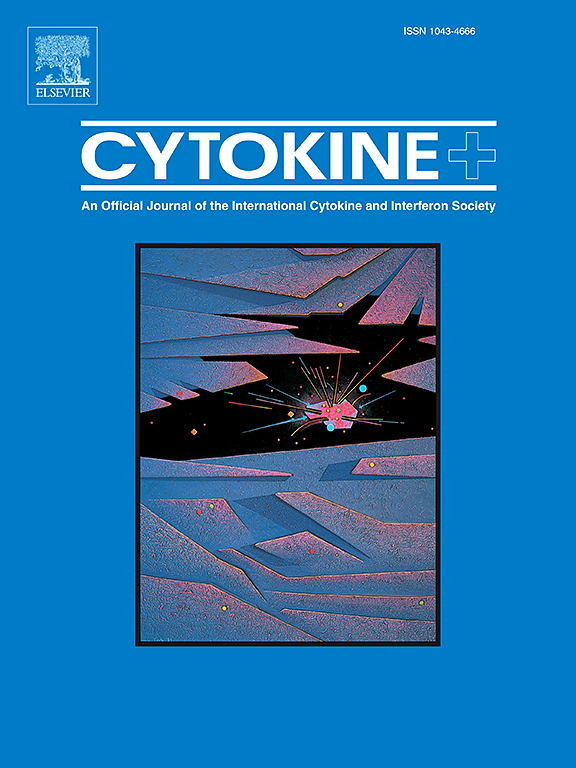GLUT1在巨噬细胞-成纤维细胞相互作用中促进nets介导的巨噬细胞表型转换损伤的作用机制
IF 3.7
3区 医学
Q2 BIOCHEMISTRY & MOLECULAR BIOLOGY
引用次数: 0
摘要
本研究基于成纤维细胞和巨噬细胞之间的相互作用,探讨了葡萄糖转运蛋白1型(GLUT1)在高糖环境下促进中性粒细胞胞外陷阱(NET)介导的巨噬细胞表型转化的机制。我们证明了GLUT1在免疫细胞-成纤维细胞串扰中起重要作用。高糖诱导GLUT1上调高迁移率组框1 (HMGB1)水平,从而促进NET释放和巨噬细胞M1极化。NET抑制剂的加入促进了巨噬细胞M2极化,减轻了巨噬细胞表型转化受损。此外,过表达Glut1可增强炎性因子肿瘤坏死因子α (TNF-α)和白细胞介素β (IL-1β)的表达,导致成纤维细胞的炎症损伤,抑制NETs可显著逆转这一损伤。结果表明,GLUT1介导了net、巨噬细胞表型转换障碍和成纤维细胞炎症损伤之间的串扰。本研究强调了GLUT1在免疫细胞与成纤维细胞相互作用中的重要性,以及其在net介导的巨噬细胞表型转换损伤中的调节作用。这些发现提示高糖环境下HMGB1和NETs之间的调控机制可能为治疗糖尿病伤口提供潜在的治疗靶点。本文章由计算机程序翻译,如有差异,请以英文原文为准。

The mechanism of action of GLUT1 in promoting NETs-mediated impairment of macrophage phenotypic switching based on macrophage-fibroblast interplay
This study explored the mechanism by which glucose transporter type 1 (GLUT1) promotes neutrophil extracellular trap (NET)-mediated macrophage phenotype conversion in a high-glucose environment, based on the interaction between fibroblasts and macrophages. We demonstrated that GLUT1 plays an important role in immune cell–fibroblast crosstalk. High glucose induces GLUT1 to upregulate high mobility group box 1 (HMGB1) levels, thereby promoting NET release and macrophage M1 polarization. Addition of a NET inhibitor promoted macrophage M2 polarization and alleviated the impaired macrophage phenotype conversion. Additionally, overexpression of Glut1 enhanced the expression of inflammatory factors tumor necrosis factor alpha (TNF-α) and interleukin beta (IL-1β), leading to inflammatory damage to fibroblasts, which was reversed significantly by inhibiting NETs . The results indicated that GLUT1 mediates the crosstalk between NETs, macrophage phenotype conversion impairment, and inflammatory damage in fibroblasts. This study emphasizes the importance of GLUT1 in the interaction between immune cells and fibroblasts, and its regulatory role in the impairment of NET-mediated macrophage phenotype conversion. These findings suggest that the regulatory mechanisms between HMGB1 and NETs in a high-glucose environment might provide potential therapeutic targets to treat diabetic wounds.
求助全文
通过发布文献求助,成功后即可免费获取论文全文。
去求助
来源期刊

Cytokine
医学-免疫学
CiteScore
7.60
自引率
2.60%
发文量
262
审稿时长
48 days
期刊介绍:
The journal Cytokine has an open access mirror journal Cytokine: X, sharing the same aims and scope, editorial team, submission system and rigorous peer review.
* Devoted exclusively to the study of the molecular biology, genetics, biochemistry, immunology, genome-wide association studies, pathobiology, diagnostic and clinical applications of all known interleukins, hematopoietic factors, growth factors, cytotoxins, interferons, new cytokines, and chemokines, Cytokine provides comprehensive coverage of cytokines and their mechanisms of actions, 12 times a year by publishing original high quality refereed scientific papers from prominent investigators in both the academic and industrial sectors.
We will publish 3 major types of manuscripts:
1) Original manuscripts describing research results.
2) Basic and clinical reviews describing cytokine actions and regulation.
3) Short commentaries/perspectives on recently published aspects of cytokines, pathogenesis and clinical results.
 求助内容:
求助内容: 应助结果提醒方式:
应助结果提醒方式:


